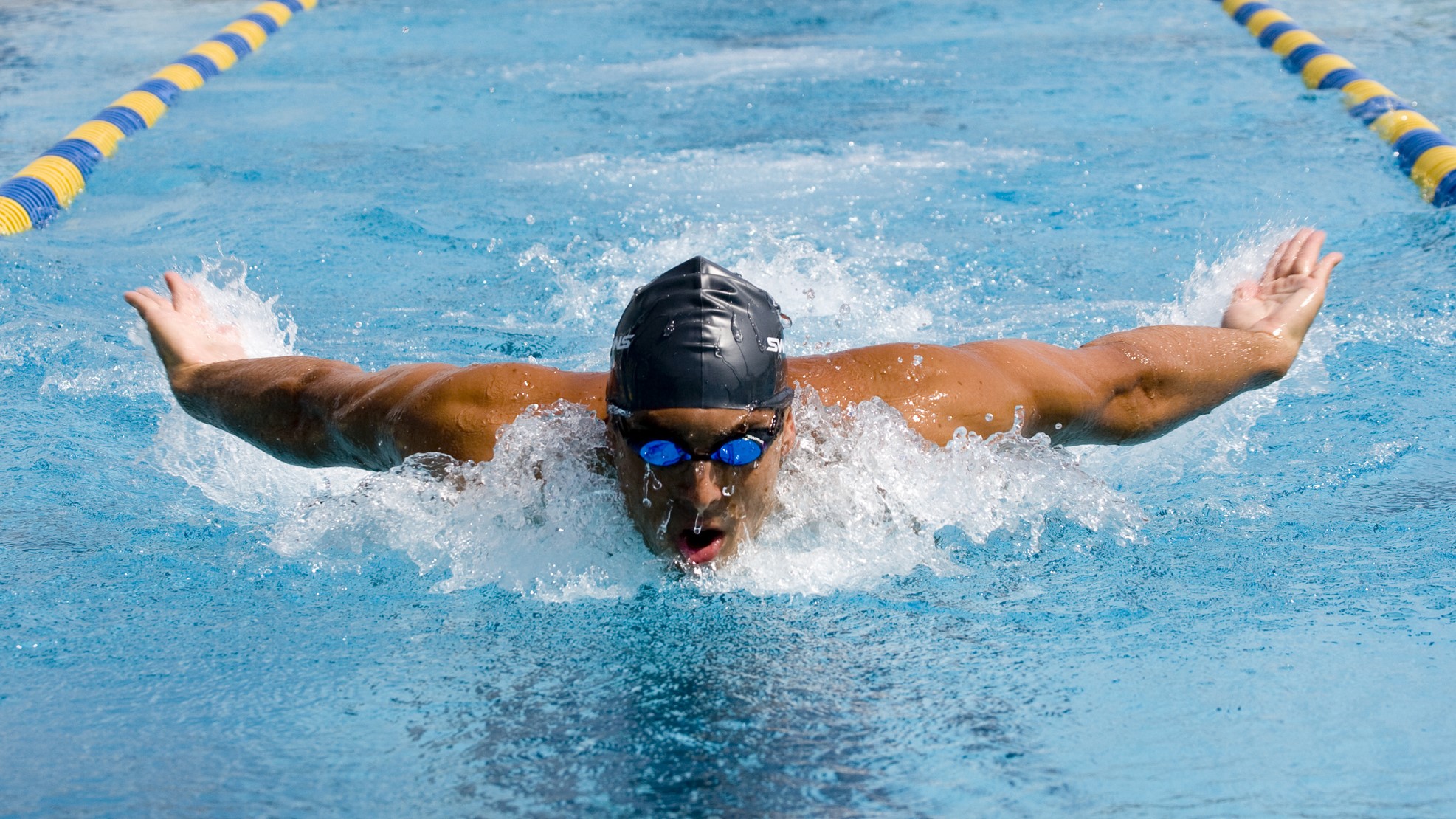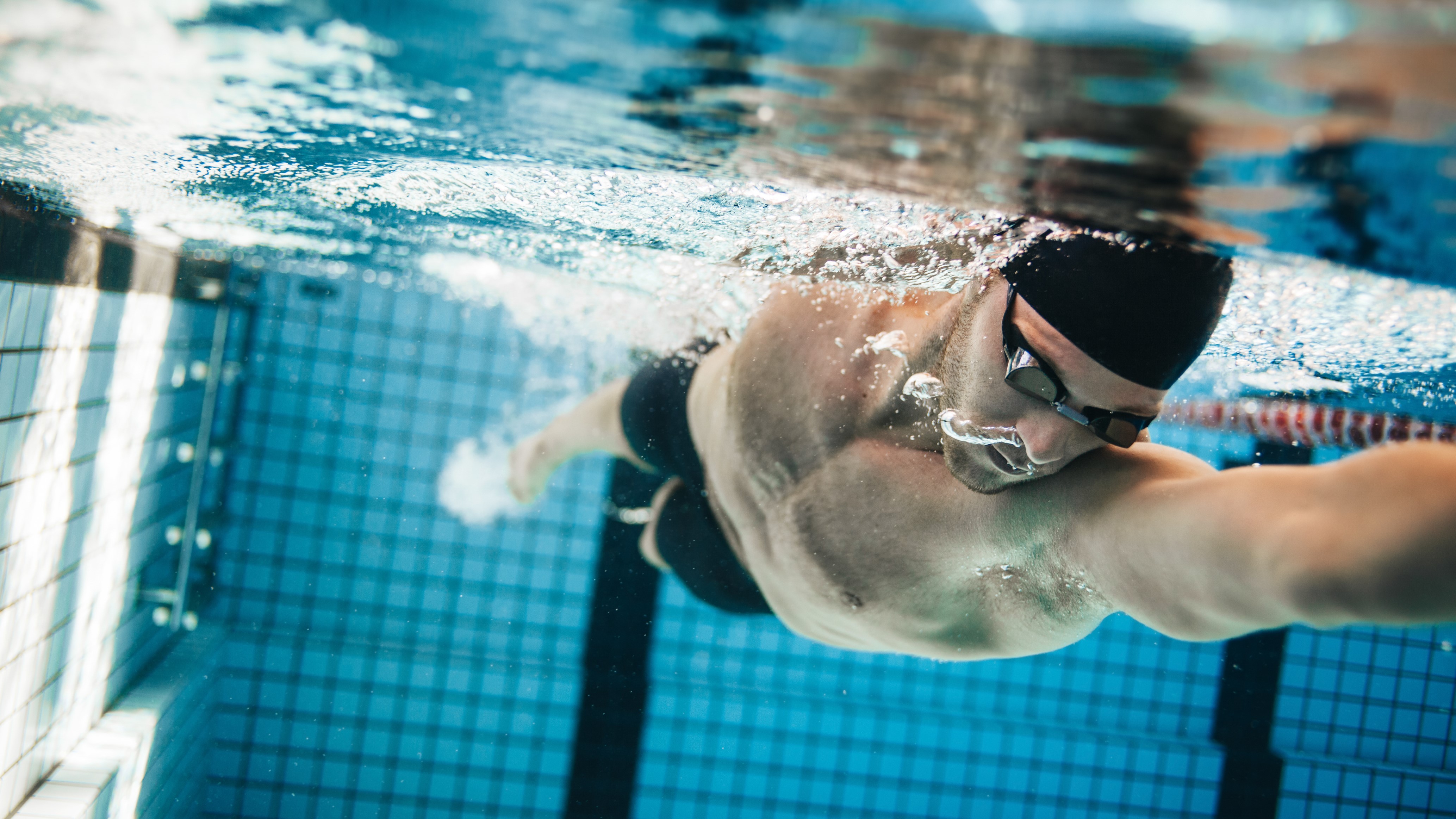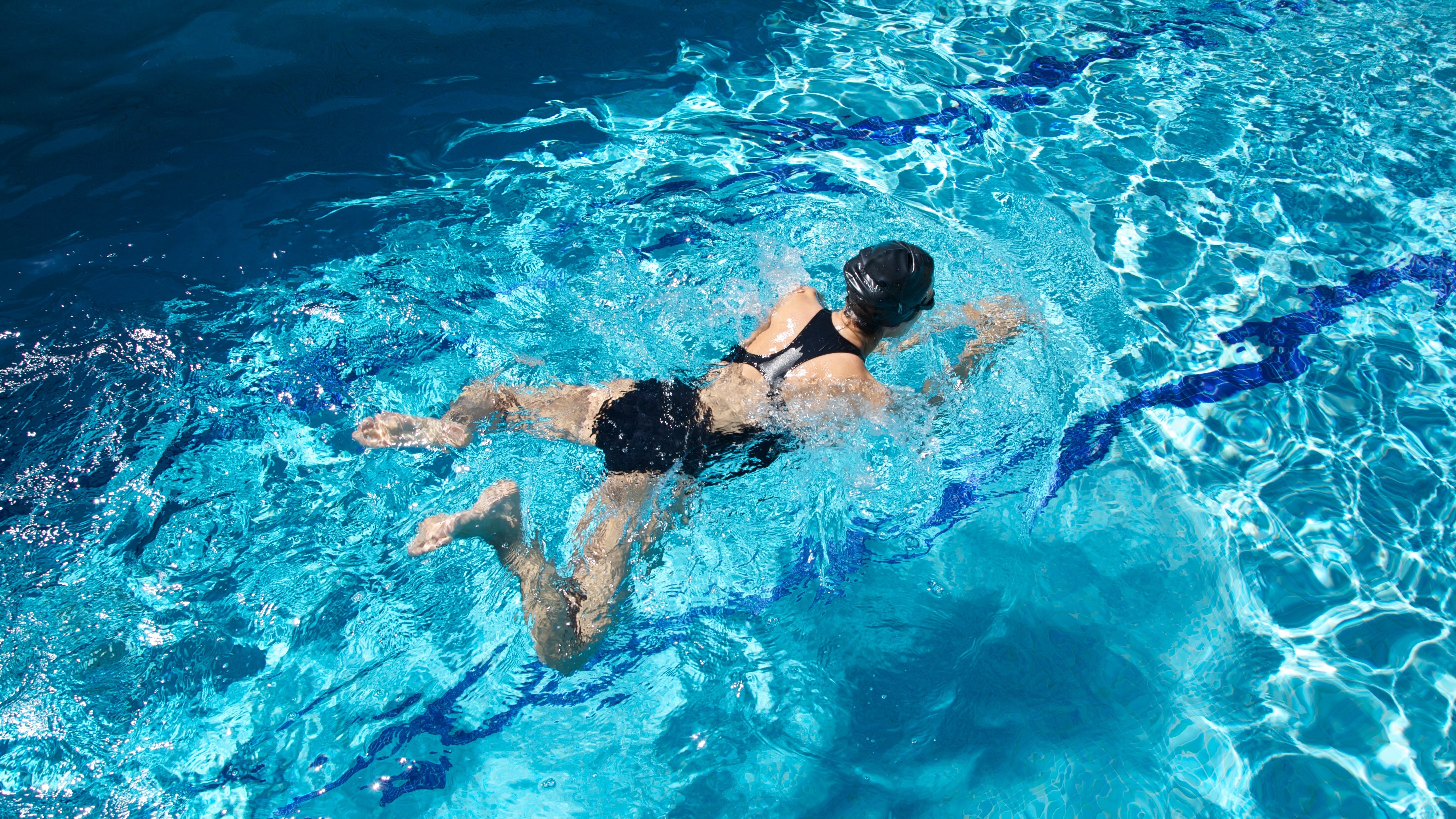
Swimming is a super versatile exercise that can prove to be a rewarding workout for just about anyone looking to build up their fitness.
Requiring engagement of the entire body, it helps improve cardiovascular endurance, muscle strength and flexibility and better still, its low-impact nature offers respite from the relentless pounding of traditional workouts. What’s more, the buoyancy of water reduces stress on the skeletal system while simultaneously challenging muscles to work against the resistance. It’s hard to fault swimming and its many benefits.
However, the thing with swimming for fitness is that it can offer a completely different workout experience depending on the stroke performed, whether that’s freestyle, breaststroke, backstroke or butterfly. But which is the best stroke for shredding fat and losing weight? Let’s find out.
What are the different swimming stokes?
Every swimmer has their preferences when it comes to stroke type. But if you’re looking to swim for fitness and don’t mind which stroke you do as long as it’s good for fitness and burns fat, then it’s probably best to look at how effective each type is, and how many calories they can help you burn.
So, to find out what the best possible swimming strokes are for fitness, I spoke with Brian Johns, Head of Coaching Science at smart goggles brand FORM. He breaks down the four main swim strokes of freestyle, backstroke, breaststroke and butterfly to uncover how many calories each can help you burn and what challenges you can expect to face when performing them.
As a side note, the expected calorie ranges for each stroke below have been based on a 155lb/70kg person swimming for one hour with an average swim intensity.
Freestyle (or front crawl)

Freestyle, the speedster of swimming strokes, dominates not only in popularity but in its fluidity. Swimmers that employ a front crawl often showcase long, rhythmic strokes alongside powerful kicks. It's the go-to for endurance, full-body engagement and burning calories.
Get instant access to breaking news, the hottest reviews, great deals and helpful tips.
Average calories you can expect to burn: 600-700 per hour
Backstroke

The backstroke involves gracefully navigating the water on your back. With alternating arm strokes and flutter kicks, the stroke offers a low-impact workout, promoting spine alignment and toning upper body muscles.
Average calories you can expect to burn: 500-700 per hour
Breaststroke

Embracing a gentler approach, the breaststroke is defined by simultaneous arm sweeps and frog-like kicks. It’s the ideal choice for beginners, offering a more relaxed approach to cardiovascular health while also toning muscles.
Average calories you can expect to burn: 400-700 per hour
Butterfly

The butterfly stroke is the most chaotic of all strokes as it involves simultaneous circular movement of the arms - sweeping them outward and then back toward your chest - alongside dolphin kicks. Reserved for the bold, it demands core strength and coordination. If you’re able to perform it with precision for extended periods, you’ll reap the rewards. This stroke’s intense energy expenditure makes it a powerhouse for building muscle and stamina.
Average calories you can expect to burn: 800-900 per hour
Johns explains that, for each stroke, the calorie burn ranges can be pretty wide depending on the competence and the intention of the swimmer.
“Both breaststroke and backstroke are taught as 'life-saving' strokes because you can do them both easily while breathing easily using minimal energy,” he says.
“But if you are training each of the strokes, the differences between each stroke minimizes as you increase your effort.”
Which stroke is best for fitness?
While calories are one way to quantify how well a certain stroke might help keep you fit and healthy, numbers aren’t everything. Sure, butterfly stroke has the most potential in aiding calorie burn, as we can see above. However, Johns says that freestyle is still likely the best stroke for fitness.
“It’s the fastest stroke, and the stroke most commonly used in training groups,” he explains. “As you gain proficiency in the water you will be able to push, and back off, your effort so that you can manage your workout better - just like changing your running pace for easier and harder workouts.”
Somewhat surprisingly, he also notes backstroke as an underutilized stroke for keeping trim, stating that it has all of the same benefits as freestyle and can even be built up for fitness in a very similar manner.
“As long as you are comfortable moving backwards and looking at the ceiling, integrating more backstroke could be helpful in working on your back muscles to counteract all of the work in your muscles on your front for the other three strokes,” he adds. “And if you are able to do it, butterfly can be a great way to mix up high-intensity workouts.”
If you’re training in a 25-metre pool, Johns recommends doing the butterfly one length at a time. “This can be a great replacement for doing freestyle at a high effort, without having to drudge your way through a lot of hard meters.”
How challenging is each stroke?
As someone becomes more proficient in the water, it’s common for their swimming range (how easy they find it and how fast they can perform) will likely increase, so it's important to keep that in mind if you’re looking to dedicate yourself to the sport and want swimming to be a more important aspect of your training.
“This applies to each of the four strokes. Someone learning how to do breaststroke properly is likely burning more calories than a proficient breaststroke swimmer going easily,” explains Johns.
However, he adds that there’s an exception for butterfly stroke, which he says is generally considered the most challenging stroke because of its technical demands. “Butterfly requires the arms and legs to be in sync, moving simultaneously, in order to actually lift the head and body up high enough to get the head out of the water to breathe,” he explains.
“This extra demand brings gravity more into the equation than other strokes and can be very difficult for novice swimmers to master. Even for competitive swimmers, butterfly tends to be the most challenging, and highest calorie-burning, stroke due to this extra demand.”
Common form mistakes to look out for
No matter what type of swimming you decide to pursue, each and every stroke requires the learning of technical aspects, which you should follow to ensure your form is the best it can be.
This will help reduce the risk of injury, and keep you more comfortable in the water for longer periods, ensuring you build stamina better over time. Here are two quick nuggets of wisdom to help ensure you’re swimming in the best possible way, according to Johns:
1. Learn to be streamlined at the surface of the water
The head, hips and heels (toes in the case of backstroke) should be in line at the surface of the water. If the head is buried or the body is dragging, then it makes everything else more difficult.
2. The head leads the way for all strokes
Minimizing head movement to just what’s necessary to breathe is an important tip for all strokes.
“For backstroke with the face out of the water, this means that the head should be perfectly still as the rest of the body does the work,” advises Johns.
For the other three strokes, coordinating the stroke in time with your breath is key for good technique. “For freestyle, this means breathing with one half of your goggles in and the other half out of the water as you turn to breathe,” he adds. “For butterfly and breaststroke, that means lifting your head just enough to breathe — with your chin close to the surface for butterfly, and a little higher for breaststroke”.
More from Tom's Guide
- Running vs swimming: Which burns more calories?
- Running vs power walking: Which burns more calories?
- The best waterproof headphones for swimming

Lee Bell is a freelance journalist and copywriter specialising in technology, health and fitness and how the latest innovations are shaking up the lifestyle space. From national newspapers to specialist-interest magazines and digital titles, Lee has written for some of the world’s most respected publications during his 12-plus years as a journalist.
